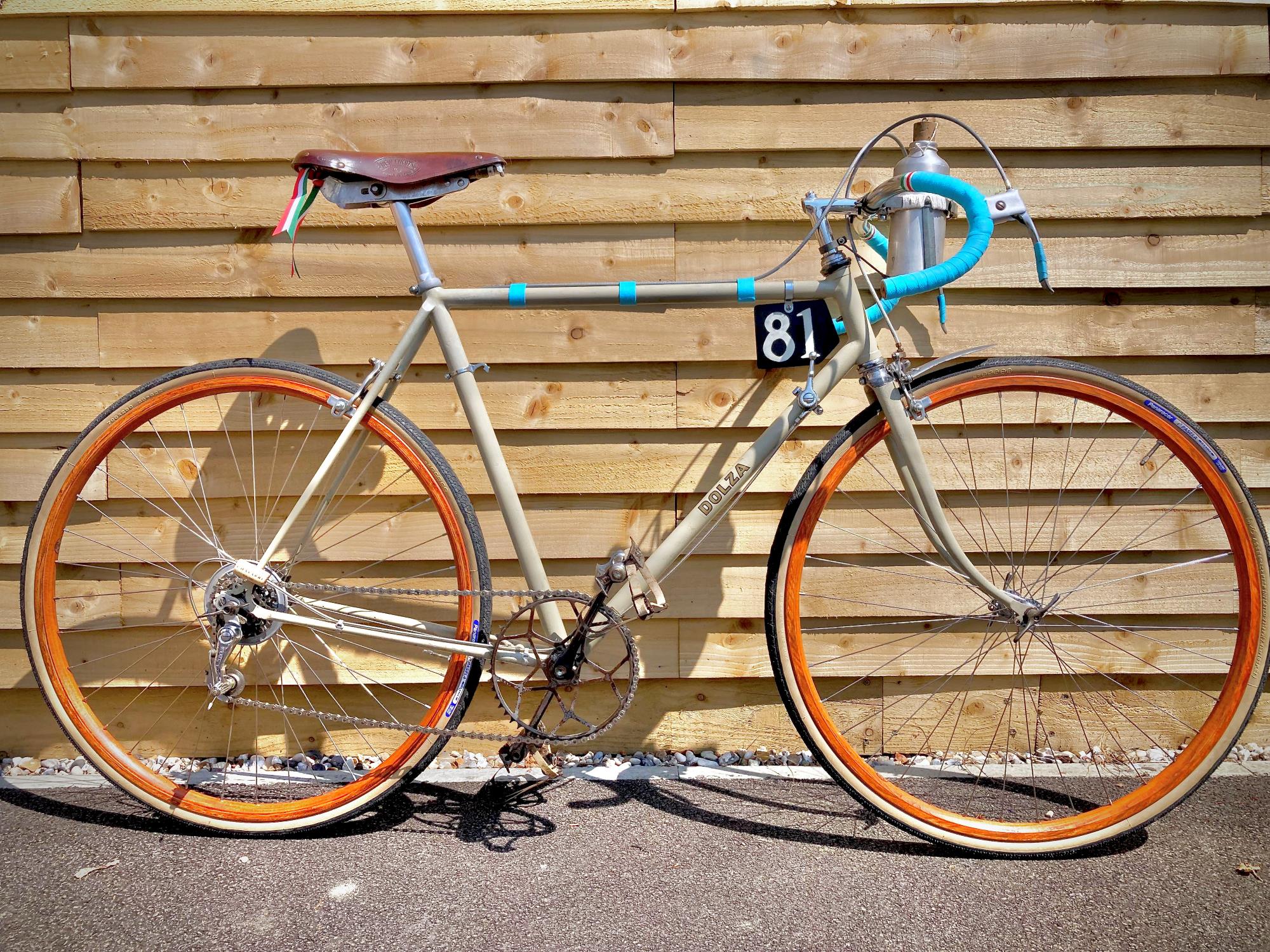A guest post by Giles Jacobs
Circa 1932
As promised, here’s an account of my latest build. It was eventually imported from Italy (after over a month languishing with UK customs) and originally came from an elderly collector based in Turin, home city of its artisan frame builder Lino Beltramo. The Dolza name refers to a Turin bike shop that continued in business until relatively recently. Now read on…
Beltramo (born 1898) pioneered “filet brazed” frames (constructed without lugs), by utilising low temperature brazing techniques. He worked in a cycle shop from a young age, rode competitively to a high standard and set up his own workshop in 1915. Then after serving in the 1st World War he returned and moved his shop to 81 Via Lessona in Turin, selling cycles under his own name, that were both distinctive for their lug-less frames and their metallic azure blue paint. I’ve also seen reference to an association between Beltramo and French cycle manufacturer and very successful racing team Alcyon (who also produced lug-less frames.) However quite who influenced who, and how closely they were involved is unclear.
Beltramo equipped many of the top riders in the Turin area in the 1920s and ’30s, but his refusal to join the fascist party come the 2nd World War, saw him have to close his workshops for its duration, transferring his business to within a department of the car manufacturer Cisitalia. He returned after the war, continuing in his craft well into the 1960s.

Just why this specific Beltramo frame ended up with the Dolza name and painted khaki (or perhaps more generously latte) isn’t known? It could have been for the shop window, or branding by the shop in collaboration with Beltramo. Or perhaps branded when updated by the shop soon after the second world war (when new racing bicycles were scarce.) It might even be that the shop was sponsoring some form of racing.
Whatever the reason, this bike was certainly re-painted and modified in the late 1940s, at that point being fitted with the rare Vittoria Giuseppina gear it has now. Prior to this, its flip-flop rear wheel would have offered a fixed gear on one side (as it still does today) and a single freewheel gear on the other. Alternatively it may have featured two single freewheel gears (one on each side), to offer the rider a climbing gear.

The case for the frame dating from the very early 1930s is strong, not only due to it’s geometry, but also according to its 483 frame number, that precedes any Beltramo I can find registered. It’s also likely the bike was raced. It was certainly used hard! As the seat post was cut short and the pedals are eroded to their undersides from steep cornering – perhaps suggesting track, or even cinder or cyclo-cross use.
The bike’s general condition on receipt was exceedingly scruffy, although with much of the 1940s paint intact. All the components were dirty, bearings worn (although cups generally good) and most of the chrome lost to all but the fork crown.

Because of it’s age and twin configurations, it’s been by far the most difficult build I’ve ever done – more in keeping with restoring a car, than refitting a cycle. The wooden rimmed wheels alone, took me three weeks to build! Plus a crack to the base of the seat post binder expansion slot necessitated sending the frame away to Ellis Briggs for repair – and while they were at it, a little fine tuning to the dropouts and checks to the frame alignment was undertaken.
Because of it’s age and twin configurations, it’s been by far the most difficult build I’ve ever done – more in keeping with restoring a car, than refitting a cycle. The wooden rimmed wheels alone, took me three weeks to build! Plus a crack to the base of the seat post binder expansion slot necessitated sending the frame away to Ellis Briggs for repair – and while they were at it, a little fine tuning to the dropouts and checks to the frame alignment was undertaken.








Leave a Reply